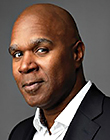The Year of Belonging: 5 Ways to Create a More Inclusive 2023 (and Sidestep a Common Mistake)March 17, 2023
By Amri B. JohnsonThe Year of Belonging: 5 Ways to Create a More Inclusive 2023 (and Sidestep a Common Mistake)
 Amri B. Johnson is the author of “Reconstructing Inclusion: Making DEI Accessible, Actionable, and Sustainable.” For more than 20 years, he has been instrumental in helping organizations and their people create extraordinary business outcomes. As CEO/founder of Inclusion Wins, Johnson and a virtual collective of partners converge organizational purpose to create global impact with a lens of inclusion. For more information, please visit inclusionwins.com.
Amri B. Johnson is the author of “Reconstructing Inclusion: Making DEI Accessible, Actionable, and Sustainable.” For more than 20 years, he has been instrumental in helping organizations and their people create extraordinary business outcomes. As CEO/founder of Inclusion Wins, Johnson and a virtual collective of partners converge organizational purpose to create global impact with a lens of inclusion. For more information, please visit inclusionwins.com.
Belonging has an incredible impact on the workplace experience. Studies show it boosts job performance, dramatically improves retention, and makes employees feel great about their work experience and company. It helps people thrive. And inclusion is a vital part of the “belonging” equation — as long as you approach it the right way.
Inclusion efforts can drive that vital sense of belonging, but only if you approach them in a way that unites rather than divides. Many well-meaning companies focus their efforts on single identity-focused DEI strategies, but this can backfire by making people, in what has historically been the “in-crowd,” feel disconnected from the true purpose of the DEI paradigm.
The only kind of inclusion system that truly perpetuates belonging is one that centers on humanity, creating conditions for all people to thrive across their differences and similarities. Moving toward this goal is a worthy resolution for 2023.
While a humanity-centric approach to inclusion won’t happen overnight (it’s an ever-evolving process), you can make big progress in the upcoming year by doing these five things:
Appreciatively listen to all voices.
Aim to truly hear and understand your employees. Do they all feel safe to speak freely? And if they feel empowered to share their viewpoints and experiences, are they being heard by all team members and leaders? Reflect on whose ideas you promote most often — and whose contributions you are likelier to ignore. If you catch yourself playing favorites, make a goal of focusing only on performance instead of on the person doing the work.
To ensure that you are hearing from all voices, I recommend identifying the people you rarely speak to, work with or mentor. Reach out to those people specifically. Make an effort to engage with them frequently in one-on-one meetings, email conversations or hallway chats. Talk about the work, but also get to know them on a personal level.
Examine your talent pipeline.
Are you hiring and retaining talent from all backgrounds? Be sure to cast a wide net. If you notice that many of your employees attended the same university category (e.g., state schools, alma mater of influential leadership, Ivy League schools), it’s time to branch out. And, make sure you attract talent from a broad spectrum of identities and lived experiences. And, don’t stop there. Once you attract a diverse group of committed people, create paths for growth, development, and thriving to keep them. If you are unsure of how to do so, ask them.
Pivot away from single-identity focused belongingness.
It’s very important to support and welcome those groups who have been historically excluded — people of color, LGBT, the disabled, older employees, women and others. But, true inclusion must encompass all employees if it is to work for anyone. This includes those who hold longstanding power and privilege.
We can advocate for the various individual identities that make up the workforce all day long, but true inclusion happens only when we approach it from a shared humanity standpoint. Humans need inclusion, no matter their identities. DEI is for everyone.
If you’re running your organization as a “meritocracy,” stop now.
Those are not as fair as they might seem at first glance. In fact, they can be harmful to an organization’s most vulnerable employees. Why? Because the “best” people who rise to the top have often had greater opportunities than those who have historically been underexposed to things that some might take for granted. Top performers are not the only people who deserve to thrive at work. And, those we identify as “top performers” often benefit from being part of in-groups. They have had greater access to information, emerging insights or power.
Meritocracy’s myth resides in the erroneous notion that someone who has historically been advantaged is inherently more advanced than someone with less advantage. Allow everyone to develop and grow.
Design an inclusion system that accounts for the complexity of today’s world.
It is possible for everyone to win and thrive across their differences. Yet, we must understand that the world is far more ambiguous and complex than ever before — and we must design inclusion systems that allow us to make sense of and navigate this ambiguity and complexity.
I work with clients to create the conditions critical to inclusion becoming normative — accessible, actionable, sustainable and positively contributing to the larger mission. The idea is to help organizations to solve existing problems, while continually adapting to whatever new challenges or goals arise over time in the organization.
Now is the perfect time to focus on what we all have in common and foster a strong sense of belonging. Organizations can take a big step forward in 2023 by creating conditions where everyone can fearlessly be who they are and share their unique perspectives. We can all be who we are, together, and thrive. C&IT












